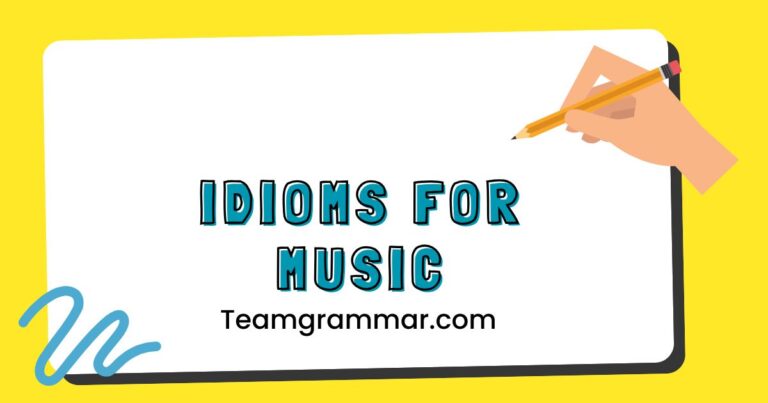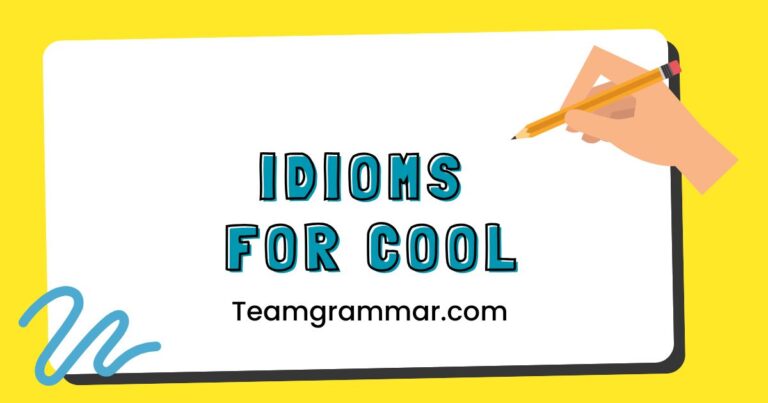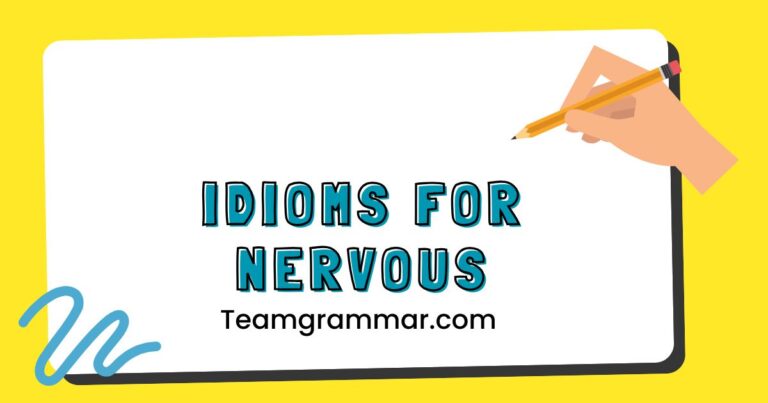45 Illuminating English: Mastering Idioms for Light and Understanding
Idioms are the colorful threads that weave through the fabric of everyday English, adding depth, nuance, and a touch of local flavor to our conversations and writing. Understanding idioms related to “light” is particularly illuminating, as they often convey abstract concepts like clarity, hope, knowledge, and revelation.
This article is designed to guide English language learners of all levels through the fascinating world of light-related idioms, offering clear definitions, structural breakdowns, practical examples, and engaging exercises to help you master their usage. Whether you’re preparing for an English proficiency exam, aiming to enhance your conversational skills, or simply curious about the intricacies of the English language, this guide will shed light on these expressive phrases and empower you to use them with confidence and accuracy.
By the end of this article, you’ll not only recognize and understand common idioms related to light, but also be able to use them appropriately in various contexts, enriching your communication and deepening your understanding of English culture.
Table of Contents
- Introduction
- Definition of Idioms for Light
- Structural Breakdown
- Types and Categories of Light Idioms
- Examples of Idioms for Light
- Usage Rules
- Common Mistakes
- Practice Exercises
- Advanced Topics
- FAQ
- Conclusion
Definition of Idioms for Light
An idiom is a phrase or expression whose meaning cannot be understood from the ordinary meanings of the words it contains. In other words, it’s a figurative expression that has a meaning different from the literal meaning of its individual words.
Idioms related to “light” are particularly evocative, drawing on the symbolic associations of light with concepts such as knowledge, understanding, hope, and visibility. These idioms often convey complex ideas in a concise and memorable way, making them an essential part of effective communication in English.
Classification: Light idioms fall under the broader category of figurative language, which also includes metaphors, similes, and personification. They are a subset of idioms that specifically utilize the imagery of light to represent abstract concepts.
Function: The primary function of light idioms is to add color and depth to language. They can make communication more engaging, expressive, and relatable by drawing on shared cultural understandings of light as a symbol.
Contexts:Light idioms are used in a wide range of contexts, from everyday conversations to formal writing. They are particularly common in literature, journalism, and public speaking, where they can be used to create vivid imagery and convey complex ideas in a concise and impactful way.
The specific idiom used will depend on the context and the intended meaning.
Structural Breakdown
Understanding the structure of idioms is crucial for using them correctly. Most light idioms are phrases or clauses, often containing verbs, nouns, and prepositions.
The key is to recognize that the meaning of the idiom is not simply the sum of its parts; it’s a separate, figurative meaning that has evolved over time.
Common Patterns:Many light idioms follow common structural patterns. For example, some idioms use light as a metaphor for knowledge or understanding, while others use it to represent hope or optimism.
Recognizing these patterns can help you decipher the meaning of unfamiliar idioms.
Variations:Some light idioms have variations in wording or structure, but the core meaning remains the same. For example, “shed light on” and “throw light on” are both common variations that mean to clarify or reveal something.
Being aware of these variations can help you avoid confusion and use idioms more flexibly.
Literal vs. Figurative:It’s important to distinguish between the literal and figurative meanings of light idioms.
The literal meaning refers to the actual meaning of the words, while the figurative meaning is the intended meaning of the idiom. Confusing these two can lead to misinterpretations and communication errors.
Types and Categories of Light Idioms
Light idioms can be broadly categorized based on the concepts they represent. Here are four common categories:
Idioms Related to Clarity and Understanding
These idioms use the imagery of light to represent clarity, understanding, and the process of making something easier to comprehend. They often describe the act of revealing information or making something more transparent.
Idioms Related to Hope and Optimism
These idioms associate light with hope, optimism, and the idea of a positive future. They often describe situations where there is a glimmer of hope or a reason to be optimistic.
Idioms Related to Knowledge and Revelation
These idioms use light to symbolize knowledge, insight, and the act of discovering or revealing information. They often describe the process of learning something new or gaining a deeper understanding.
Idioms Related to Visibility and Appearance
These idioms focus on the literal aspect of light, relating to how things are seen or perceived. They often describe making something visible or bringing attention to it.
Examples of Idioms for Light
The following sections provide examples of light idioms, organized by category, to illustrate their meaning and usage.
Examples of Clarity and Understanding Idioms
The table below presents examples of idioms related to clarity and understanding. Each example includes the idiom, its meaning, and a sample sentence to illustrate its use in context.
| Idiom | Meaning | Example Sentence |
|---|---|---|
| Shed light on | To clarify or explain something | The investigation shed light on the cause of the accident. |
| Throw light on | To clarify or explain something | Her research threw light on the effects of climate change. |
| Bring to light | To reveal or make known | The journalist brought to light the corruption within the government. |
| In light of | Considering or taking into account | In light of recent events, we have decided to postpone the meeting. |
| See the light | To understand something after a period of confusion | After hours of explanation, he finally saw the light. |
| Clear as daylight | Very easy to see or understand | The instructions were clear as daylight. |
| In a new light | To see something differently than before | After hearing her side of the story, I saw the situation in a new light. |
| Illuminate the issue | To make an issue more clear and understandable | The debate illuminated the issue and helped voters make an informed decision. |
| The lights are on but nobody’s home | Someone is not very intelligent or is not paying attention | He just stared blankly at the question – it was like the lights are on but nobody’s home. |
| Come to light | To become known publicly | New evidence has come to light in the case. |
| Cast light on | To provide new information about something | The documentary cast light on the lives of refugees. |
| A lightbulb moment | A sudden realization or understanding | I had a lightbulb moment when I finally understood the solution. |
| See the light of day | To become public or to be born | This project may never see the light of day if we don’t get funding. |
| Shine a light on | To highlight or bring attention to something | The article shined a light on the struggles of small businesses. |
| Bring something to light | To reveal or make known | The investigation brought several important facts to light. |
| Dawn on someone | To become apparent or clear to someone | It suddenly dawned on me that I had forgotten my keys. |
| Let there be light | A call for understanding or enlightenment | In the darkness of ignorance, we must let there be light through education. |
| Enlighten someone | To give someone information so they understand something | Could you please enlighten me on the current situation? |
| In the light of day | Openly and honestly | We need to discuss this in the light of day, without secrets. |
| A beacon of light | A source of hope or guidance | During the crisis, her leadership was a beacon of light. |
| Blind someone with science | To confuse someone with technical or complex information | The salesman tried to blind me with science, but I didn’t fall for it. |
| A ray of light | A small amount of hope in a difficult situation | Her smile was a ray of light during the difficult times. |
| To take something lightly | Not taking something seriously | He took my warning lightly and landed in trouble later. |
| To be in the limelight | Being the center of attention | The actress has been in the limelight since her debut. |
| Burning the candle at both ends | Working very hard with long hours and little rest | He’s been burning the candle at both ends to finish this project. |
Examples of Hope and Optimism Idioms
This table presents idioms that relate to hope and optimism, showcasing how light can symbolize a positive outlook or a chance for improvement.
| Idiom | Meaning | Example Sentence |
|---|---|---|
| See the light at the end of the tunnel | To see a sign of hope after a difficult period | After months of hard work, we could finally see the light at the end of the tunnel. |
| A glimmer of hope | A small sign of hope | There was a glimmer of hope that the negotiations would succeed. |
| Brighten up | To become more cheerful or optimistic | The news brightened up her day. |
| Look on the bright side | To focus on the positive aspects of a situation | Even though we lost the game, we should look on the bright side and learn from our mistakes. |
| Light at the end of the tunnel | A sign of hope after a long and difficult period | The new policies offer light at the end of the tunnel for struggling businesses. |
| Shine brightly | To be successful and noticeable | She is expected to shine brightly in her new role. |
| To hold a candle to something | To compare favorably to something | This new technology doesn’t hold a candle to the older, more reliable system. |
| Lighten the mood | To make a situation more cheerful | He told a joke to lighten the mood during the tense meeting. |
| Bring light to someone’s life | To make someone happy or improve their life | Her kindness brought light to his life after a difficult loss. |
| A bright future | A positive and successful future | With hard work and dedication, they have a bright future ahead of them. |
| Paint a rosy picture | To describe a situation as being better than it really is | The company’s report painted a rosy picture of their financial situation, but it was misleading. |
| Every cloud has a silver lining | There is something good in every bad situation | Even though we lost the contract, every cloud has a silver lining; we can now focus on other opportunities. |
| A silver lining | A positive aspect of a negative situation | The pandemic had a silver lining: families spent more time together. |
| The sun will come out tomorrow | Things will get better in the future | Don’t worry about today’s setback; the sun will come out tomorrow. |
| Rise and shine | A cheerful way to wake someone up | Rise and shine! It’s time to start the day. |
Examples of Knowledge and Revelation Idioms
This table focuses on idioms that use light as a metaphor for knowledge and the act of revealing information, highlighting how understanding can be seen as illumination.
| Idiom | Meaning | Example Sentence |
|---|---|---|
| In the light of day | Openly and honestly | We need to discuss this issue in the light of day, without any secrets. |
| Come to light | To become known or revealed | New evidence has come to light in the investigation. |
| Bring something to light | To reveal or make something known | The journalist brought to light the company’s illegal activities. |
| See the light | To finally understand something | After hours of explanation, he finally saw the light and understood the concept. |
| Enlighten someone | To give someone knowledge or understanding | Could you please enlighten me on the details of the project? |
| Shine a light on something | To highlight or bring attention to something | The documentary shined a light on the struggles of marginalized communities. |
| A lightbulb moment | A sudden realization or moment of clarity | I had a lightbulb moment when I finally understood the solution to the problem. |
| Dawn on someone | To become clear or obvious to someone | It finally dawned on me that I had been wrong all along. |
| Throw something into sharp relief | To make something clearer or more noticeable | The crisis threw the government’s failures into sharp relief. |
| Let there be light | A call for understanding or enlightenment | In the darkness of ignorance, we must let there be light through education. |
| Shed light on a subject | To clarify or explain something | The professor shed light on a subject that was confusing to the students. |
| Come to light | To become known or revealed | The truth finally came to light after years of secrecy. |
Examples of Visibility and Appearance Idioms
This table lists idioms that pertain to the visibility and appearance of things, using light as a literal or metaphorical tool to show how things are perceived.
| Idiom | Meaning | Example Sentence |
|---|---|---|
| In the limelight | Being the center of attention | The actress has been in the limelight since her debut performance. |
| Take a shine to someone | To quickly develop a liking for someone | I took a shine to my new neighbor as soon as I met her. |
| Hold a candle to | To compare favorably to someone or something | This new phone doesn’t hold a candle to my old one in terms of battery life. |
| Burn the candle at both ends | To overwork oneself | She’s been burning the candle at both ends trying to finish the project on time. |
| Hide your light under a bushel | To keep your talents and abilities hidden | Don’t hide your light under a bushel; share your skills with the world. |
| Put someone in the shade | To outshine someone | Her performance completely put everyone else in the shade. |
| Bring into focus | To make something clearer or more prominent | The new policy brought the issue into focus. |
| A flash in the pan | Something that shows initial promise but fails to deliver | The band’s success was just a flash in the pan; they quickly faded away. |
Usage Rules
Using light idioms correctly requires understanding their specific meanings and the contexts in which they are appropriate. Here are some general rules to follow:
- Understand the meaning: Make sure you fully understand the meaning of the idiom before using it. Misusing an idiom can lead to confusion and miscommunication.
- Consider the context: Choose idioms that are appropriate for the context of your communication. Some idioms are more formal than others, and some are more suitable for specific situations.
- Use them sparingly: While idioms can add color to your language, using too many can make your communication sound unnatural or forced.
- Be aware of variations: Some idioms have variations in wording or structure. Make sure you are using the correct variation for the context.
- Avoid literal interpretations: Remember that idioms are figurative expressions, so avoid interpreting them literally. Focus on the intended meaning of the idiom.
Common Mistakes
Here are some common mistakes that learners make when using light idioms, along with corrections:
| Incorrect | Correct | Explanation |
|---|---|---|
| The investigation shed a light about the cause. | The investigation shed light on the cause. | The correct preposition is “on,” not “about.” |
| We should look on the bright side of the tunnel. | We should look on the bright side. | “Look on the bright side” is the complete idiom. |
| He finally saw the lights. | He finally saw the light. | The idiom is “see the light,” not “see the lights.” |
| She is in the light line. | She is in the limelight. | The correct idiom is “in the limelight,” not “in the light line.” |
Practice Exercises
Test your understanding of light idioms with these practice exercises.
Complete the following sentences with the appropriate light idiom from the list below.
List: shed light on, see the light, in light of, bring to light, a glimmer of hope
| Question | Answer |
|---|---|
| 1. The new evidence helped to ________ the mystery. | 1. shed light on |
| 2. ________ the recent changes, we need to adjust our strategy. | 2. In light of |
| 3. There is still ________ that the negotiations will succeed. | 3. a glimmer of hope |
| 4. The investigation ________ some disturbing facts. | 4. brought to light |
| 5. After much explanation, he finally ________. | 5. saw the light |
| 6. The documentary will ________ the challenges faced by refugees. | 6. shed light on |
| 7. ________ new information, we have decided to reconsider our decision. | 7. In light of |
| 8. The whistleblower managed to ________ the company’s fraudulent activities. | 8. bring to light |
| 9. Despite the setbacks, there’s still ________ that we can achieve our goals. | 9. a glimmer of hope |
| 10. It took me a while, but I finally ________ and understood the solution. | 10. saw the light |
Choose the correct meaning of the underlined idiom in each sentence.
| Question | Options | Answer |
|---|---|---|
| 1. She’s been burning the candle at both ends lately. | a) relaxing, b) overworking, c) saving money | b) overworking |
| 2. The truth will come to light eventually. | a) disappear, b) be revealed, c) be hidden | b) be revealed |
| 3. He took a shine to his new car. | a) disliked, b) cleaned, c) liked | c) liked |
| 4. The scandal put the company in the shade. | a) made the company outshine others, b) made the company less prominent, c) had no effect on the company | b) made the company less prominent |
| 5. Don’t hide your light under a bushel. | a) conceal your talents, b) show off your talents, c) be modest | a) conceal your talents |
| 6. The investigation helped to shed light on the mystery. | a) complicate, b) clarify, c) ignore | b) clarify |
| 7. After much confusion, she finally saw the light. | a) became blind, b) understood, c) remained confused | b) understood |
| 8. In light of the circumstances, we must proceed cautiously. | a) ignoring, b) considering, c) despite | b) considering |
| 9. The journalist’s report brought to light new evidence. | a) concealed, b) revealed, c) destroyed | b) revealed |
| 10. There’s still a glimmer of hope for a positive outcome. | a) no hope, b) a small amount of hope, c) complete certainty | b) a small amount of hope |
Advanced Topics
For advanced learners, exploring the etymology and cultural context of light idioms can provide a deeper understanding of their meaning and usage. Researching the historical origins of these expressions can reveal fascinating insights into the evolution of language and culture.
Additionally, analyzing the use of light idioms in literature and other forms of media can enhance your ability to interpret and appreciate their subtle nuances.
Another advanced topic is the use of light idioms in different dialects of English. While many light idioms are widely understood, some may be more common in certain regions or social groups.
Being aware of these variations can help you communicate more effectively with people from different backgrounds.
FAQ
Here are some frequently asked questions about light idioms:
- What is an idiom?
An idiom is a phrase or expression whose meaning cannot be understood from the ordinary meanings of the words it contains. It’s a figurative expression that has a meaning different from the literal meaning of its individual words.
- Why are idioms important?
Idioms are important because they add color and depth to language. They can make communication more engaging, expressive, and relatable by drawing on shared cultural understandings. They are also part of what makes a language unique and interesting.
- How can I learn idioms effectively?
The best way to learn idioms is to encounter them in context, such as in books, movies, and conversations. Pay attention to how native speakers use idioms and try to use them yourself. You can also use dictionaries and online resources to look up the meanings of unfamiliar idioms.
- Are light idioms used in all English-speaking countries?
While many light idioms are widely understood, some may be more common in certain regions or social groups. It’s important to be aware of these variations and to use idioms that are appropriate for your audience.
- Can I create my own idioms?
While it’s possible to create new idioms, they are unlikely to be widely adopted unless they are particularly clever or memorable. It’s generally best to stick to established idioms that are already understood by native speakers.
- What’s the difference between an idiom and a metaphor?
Both idioms and metaphors are forms of figurative language, but they differ in their usage and structure. A metaphor is a direct comparison between two unlike things, while an idiom is a phrase with a fixed, non-literal meaning. Metaphors can be more flexible and creative, while idioms are generally more fixed and conventional.
- How do I avoid misusing idioms?
To avoid misusing idioms, make sure you fully understand their meaning and the contexts in which they are appropriate. Pay attention to how native speakers use idioms and avoid literal interpretations. If you’re unsure about the meaning or usage of an idiom, look it up in a dictionary or online resource.
- Are there any idioms that use color instead of light? How are they different?
Yes, there are many idioms that use color instead of light. While light idioms often relate to clarity, knowledge, or hope, color idioms can convey a wider range of emotions and associations. For example, “feeling blue” means feeling sad, and “seeing red” means being angry.
- Why is it important to understand the cultural context of idioms?
Understanding the cultural context of idioms is crucial because idioms often reflect cultural values, beliefs, and experiences. Knowing the cultural background of an idiom can help you understand its meaning more deeply and use it more appropriately.
- How can I practice using idioms in my daily conversations?
To practice using idioms in your daily conversations, start by identifying a few idioms that you want to use. Look for opportunities to incorporate them into your conversations, and pay attention to how native speakers respond. Don’t be afraid to make mistakes; the more you practice, the more comfortable you’ll become with using idioms.
Conclusion
Mastering idioms for light can significantly enhance your understanding and use of the English language. These colorful expressions add depth, nuance, and cultural richness to your communication, making it more engaging and effective.
By understanding the definitions, structural patterns, and usage rules of light idioms, you can confidently incorporate them into your conversations and writing.
Remember to practice regularly, pay attention to how native speakers use idioms, and don’t be afraid to make mistakes. With dedication and persistence, you can illuminate your language skills and shine brightly in your communication endeavors.
Keep exploring, keep learning, and keep shedding light on the world around you through the power of language.







